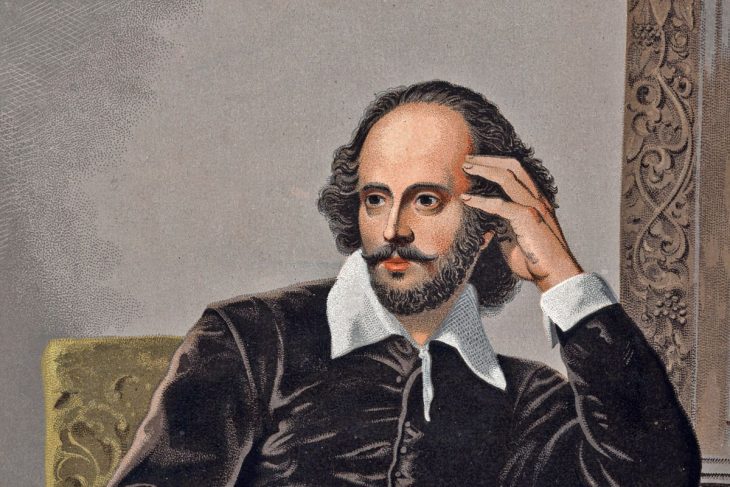
When you enter a bookstore or library, you’re sure to find Shakespeare books on one of the shelves. William Shakespeare’s plays are some of the most important literary pieces from the English Renaissance.
English Renaissance, not to be confused with the Italian Renaissance, was an art movement from 16th century England. This ended in the 17th century, but not before the peak of literature and music during the Elizabethan era.
The Elizabethan era marks the golden age of the English Renaissance. This is when the career of many artists and writers, including William Shakespeare himself, took off.
Who is William Shakespeare?
William Shakespeare was born on April 26, 1564. He died at the age of 52 in 1616. Despite dying at a relatively young age, Shakespeare was able to accomplish a lot of things in his life.
Shakespeare wrote some of the most famous plays in all of literature. However, he was more than just a popular playwright. He was also a poet and actor. He is often referred to as England’s national poet. Other titles for him include “the Bard of Avon,” after his hometown.
You might be wondering, “How many plays did Shakespeare write?” Today, people aren’t so sure. There are a lot of debates around certain works that people believe Shakespeare wrote or possibly collaborated on. Shakespeare wrote more than 30 plays. As for sonnets, he wrote more than a hundred.
Scholars categorized Shakespeare plays into three major groups: comedies, tragedies, and historical. However, they also acknowledged some of them as “problem plays.” Problem plays refer to Shakespeare plays that are too complex to truly fit into one specific genre.
No matter what genre, Shakespeare stands out. Today, they continue to do so. To find out how and why, read on for the complete list of Shakespeare plays!
Comedies
Shakespeare comedies were far different from the typical comedies of his time. His comedies were more romantic and followed the tenets of New Comedy. In New Comedy, plays were hardly satirical and focused more on everyday life. However, Shakespeare shows great versatility by publishing later plays that also dealt with fantasy and intrigue.
All’s Well That Ends Well
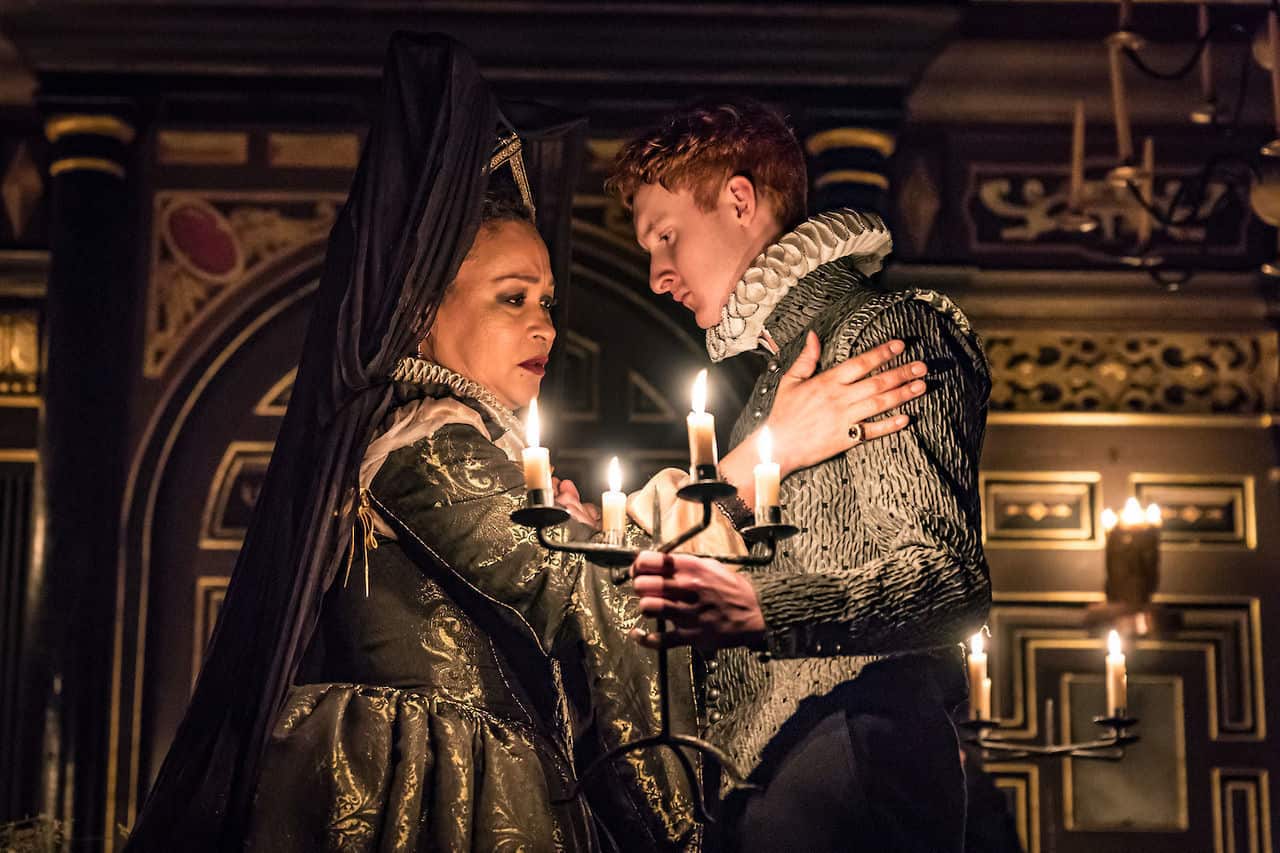
“All’s Well That Ends Well” is a Shakespeare comedy about Helena, an impoverished woman, who wants to marry Bertram, the son of a countess. Unfortunately, Bertram wants nothing to do with her. The play revolves around Helena’s schemes in trying to get Bertram to marry her, with the help of another woman named Diana.
The release date of the play is unknown, but scholars generally agree that it is from 1598 to 1608. The play comprises 23 scenes within five acts. Other characters of the play include the King of France, the Countess, and other members of the court.
This dark comedy features the bed trick. This is a popular plot device in traditional literature where Person A and Person B engage in a sexual act. However, Person A suddenly switches places with Person C. This switch goes unnoticed by Person B, so Person B and Person C end up having sex.
As You Like It
Another Shakespeare play is “As You Like It.” The comedy centers on the story of Rosalind, who disguises herself as a shepherd in order to escape persecution. Her cousin Celia accompanies her, and they escape to the Forest of Arden. There, they meet Orlando, who Rosalind falls in love with.
Many believe that Shakespeare wrote this near the end of the 16th century. It has five acts, with a total of 22 scenes. “As You Like It” is where Shakespeare’s famous speech, “All the world’s a stage,” is from. “Too much of a good thing” and “A fool! A fool! I met a fool in the forest!” are also popular verses from the play.
Like with other Shakespeare plays, media industries adapted this comedy into films, radio dramas, and musicals.
Comedy of Errors
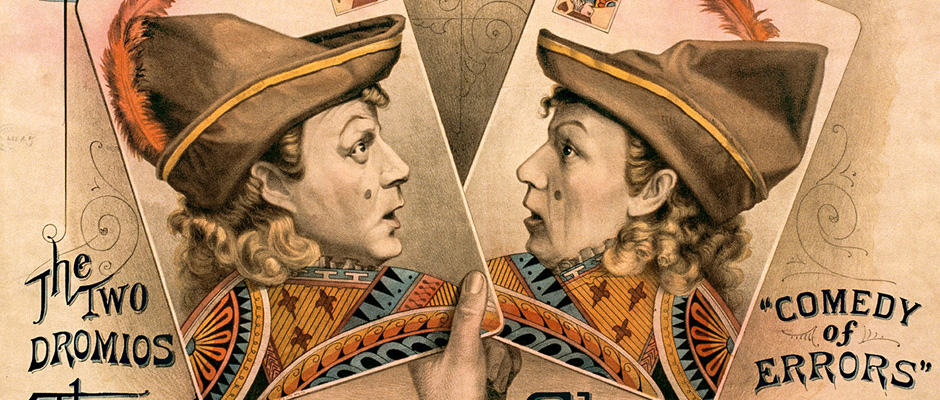
“Comedy of Errors” is a farce that showcases slapstick, puns, and other wordplays. The story is about two pairs of twin brothers who meet one another after being separated at birth. Antipholus of Syracuse and his servant Dromio of Syracuse travel to Ephesus to look for their lost brothers.
This is one of Shakespeare’s shorter plays. It is five acts long, with only 11 scenes in total. In fact, all the events in the plot occur within 24 hours of the story.
This Shakespeare play is a favorite for adaptations. Various composers adapted this into operas. “Comedy of Errors” has also inspired many film and television adaptations because of its humor.
Cymbeline
Another Shakespeare play is “Cymbeline”. Other titles for this include “The Tragedie of Cymbeline” or “Cymbeline, King of Britain.” The story follows the King Cymbeline of Britain and his family. Greed, betrayal, and jealousy are all prevalent themes in the play.
This play comprises five acts with 27 scenes in total. Scholars estimate that the play was produced as early as 1611. Originally, scholars classified “Cymbeline” as a tragedy. However, they later concluded that it was a romance or tragedy.
In Act IV, Scene 2, Shakespeare includes a funeral song. These verses are often referenced in other literature. An example is Virginia Woolf’s “Mrs. Dalloway,” where the main characters both quote lines from the song.
Love’s Labour’s Lost
“Love’s Labour’s Lost” is a comedy about Ferdinand, the King of Navarre, and his friends. They all swear an oath of abstinence for three years in order to focus on their studies. However, things get difficult when the Princess of France and her ladies visit the palace.
This is one of the shorter Shakespeare plays. Despite having five acts, it only has a total of 9 scenes. Scholars believe that it was one of Shakespeare’s earlier plays from the 1590s, with a performance in front of Queen Elizabeth I.
This is popular among modern adaptations. In the British TV show, “Doctor Who,” they feature the play in one of the episodes. BBC Radio 3 also did a radio adaptation in the 1970s. More recently, a theatre company from Chicago also did an adaptation in the format of a Zoom conference call.
Measure for Measure
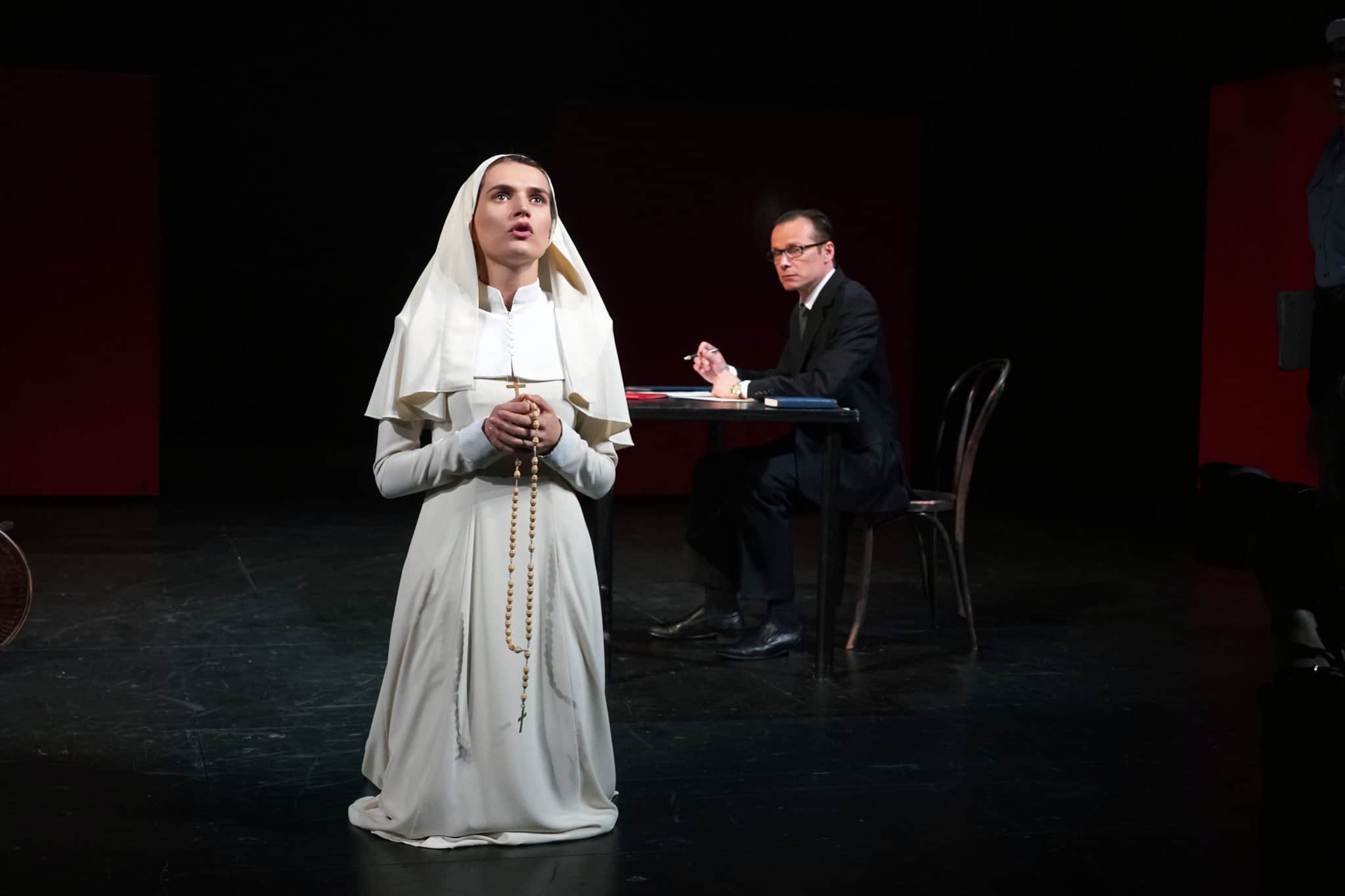
This Shakespeare play is a story about Duke Vincentio of Vienna, Angelo, and the rest of his office. Vincentio leaves Angelo to govern Vienna in his absence. However, Angelo proves to be an immoral person who exploits his newfound position.
“Measure for Measure” also has five acts, with a total of 17 scenes. Historians believe that Shakespeare wrote this play around 1604.
Despite being a comedy, the play features dark themes like corruption. However, it notably has the distinct characteristics of Shakespeare comedies. These include wordplay and irony. Because of this complexity, people often regard “Measure for Measure” as one of Shakespeare’s problem plays.
Merchant of Venice
One of the most popular Shakespeare comedies is the “Merchant of Venice.” This play is about the merchant Antonio, who takes out a hefty loan from Shylock. He uses the money to help his friend court an heiress. Conflict arises when Antonio is unable to repay the loan.
Scholars estimate this Shakespeare play is from 1596. The play has five acts, with 20 scenes in total.
To this day, people continue to quote verses from the play. The most notable ones are Shylock’s “Hath not a Jew eyes?” and Portia’s “the quality of mercy” speeches. Pop culture also references “Merchant of Venice” frequently. This includes the famous films, “Schindler’s List” and “Seven.” The “Star Trek” franchise is another example.
Merry Wives of Windsor
The story takes place in the same timeline as his other plays, “Henry IV,” Part I and II. However, the plot focuses on Sir John Falstaff, a fat knight, instead of on royalty. To fix his money problems, he tries to seduce the wives of wealthy merchants. The wives find out, and they take revenge on him.
A longer title for this Shakespeare play is “Sir John Falstaff and the Merry Wives of Windsor.” This play was published around 1600. It is five acts long, with a total of 23 scenes.
“Merry Wives of Windsor” isn’t as popular in pop culture as the other plays. Instead, there are a lot of play adaptations and operas.
Midsummer Night’s Dream

This play features several subplots. One of them focuses on the marriage of the duke and the queen. Another revolves around a group of actors who are practicing for a performance at the royal wedding. While this is happening, four Athenians run away to the forest, where Puck the fairy meddles in their affairs.
The comedy is five acts long, with only 9 scenes in total. However, it has a lot of characters, 23 to be exact. This play features the “play-within-a-play” format.
As one of the most popular Shakespeare plays, there are a lot of adaptations and studies of this play. In fact, The Beatles reenacted the play from Act V during their television special. A Walt Disney animation also retold the story.
Much Ado About Nothing
“Much Ado About Nothing” centers around the love story of two couples. Claudio falls in love with Hero, but rumors trick Claudio into doubting Hero’s chastity. Meanwhile, Benedick suffers from unrequited love for Beatrice, who is Hero’s cousin.
This Shakespeare play from around 1598 has five acts, with 17 scenes.
Marvel director Joss Whedon adapted the play into a film in 2013. BBC also produced several adaptations. One of these featured Maggie Smith, a famous actress from the Harry Potter franchise.
Taming of the Shrew

This Shakespeare play is about Petruchio courting a Katherina, a shrew. To transform her into an obedient bride, Petruchio torments her psychologically. There is also a subplot of Katherina’s younger sister, Bianca, and her line of suitors.
This play is five acts long, with a total of 14 scenes. A lot of controversy surrounds this film. People believe that it is sexist. Despite this, plenty of adaptations for the play exist. This includes plays, ballets, and operas.
The popular film, “10 Things I Hate About You,” is loosely based on this comedy.
The Tempest
In this Shakespeare play, the sorcerer Prospero uses his magic to summon a storm to wreck his brother’s ship. The survivors find themselves on Prospero’s island, where magical creatures also reside. The story follows Prospero’s revenge and the love story of his daughter with the king’s son.
“The Tempest” is one of Shakespeare’s shorter plays. It has five acts, but it only has 9 scenes in total.
There are theories that relate the story of “The Tempest” to the mystery of the Bermuda Triangle.
Twelfth Night
“Twelfth Night” follows the story of fraternal twins, Viola and Sebastian. A shipwreck separates the two, and they both believe the other to be dead. Viola disguises herself as a man and becomes Duke Orsino’s page. Conflict arises when Olivia, the woman the duke is in love with, falls in love with Viola.
This comedy is five acts long, with 18 scenes. Today, this is one of Shakespeare’s most praised works. Many people believe this to be “The Perfect Comedy.”
The film, “She’s the Man,” is a modern adaptation of this Shakespeare play. The title of Agatha Christie’s “Sad Cypress” is also from a scene in this play.
Two Gentlemen of Verona
Similar to “Twelfth Night,” this Shakespeare play features a heroine who dresses up as a boy. The story follows Proteus and Valentine, who both fall in love with Silvia. Their friendship is put to the test because of this.
Following the same five-act structure, it has a total of 20 scenes. Many judge this as one of Shakespeare’s worst plays. This might be because it is one of his earliest works.
Adaptations as early as the 1700s for this play existed. Operas of this play soon followed in the 1800s. Today, you can find many films and radio plays that reference the two best friends from the story.
Winter’s Tale
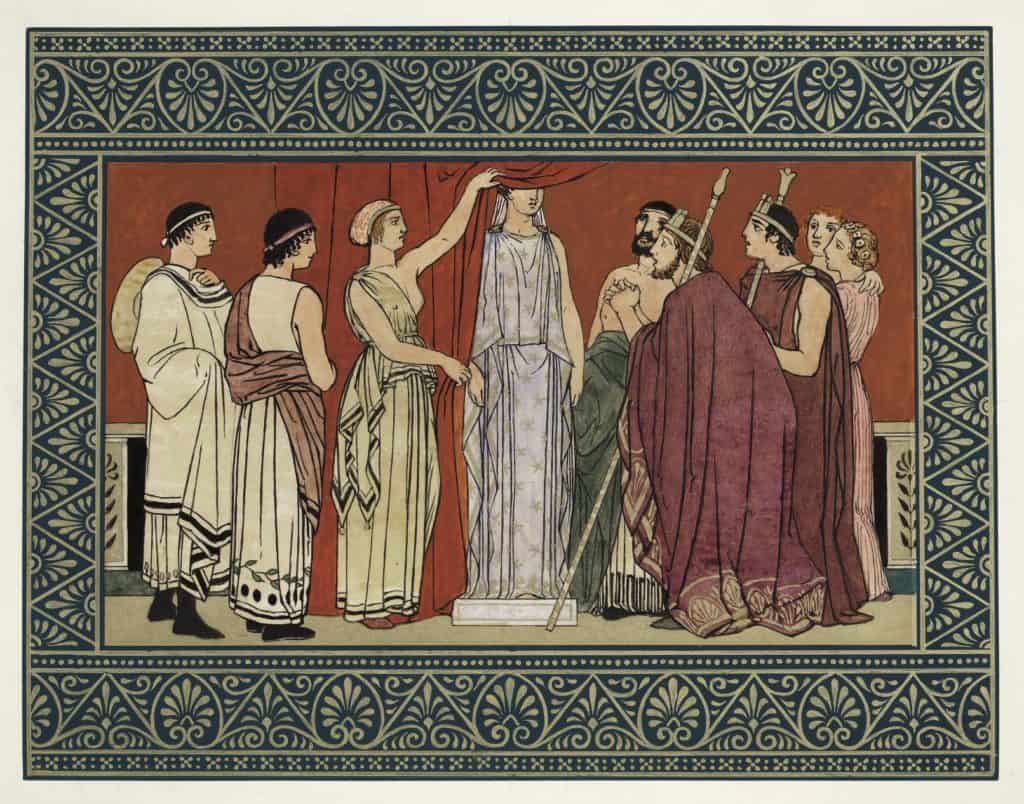
This Shakespeare play has a darker plot than his other comedies. The story follows Leontes, a jealous king who accuses his wife of cheating with his friend. His accusations cause the death of the queen and their son, as well as the exile of his newborn daughter. Years later, a romance blooms between Perdita, his exiled daughter, and a prince.
“The Winter’s Tale” has five acts and a total of 15 scenes. It is one of his problem plays because of its mixed genres. Today, many consider this to be more of a romance than a comedy.
This play is one of the most reprised by major theater companies. In 2015, famous author Jeanette Winterson published a book adaptation of the play.
Tragedies
Aside from comedies, Shakespeare wrote a number of tragedies as well. He is most famous for some of them too. Shakespeare tragedies are often based on actual figures. However, they always end unhappily. Most of them are also longer than his comedies.
He wrote most of his tragedies during the reign of James I, which historians note as a dark time for England. Drawing inspiration from his reality, Shakespeare wrote eleven tragic plays.
Antony and Cleopatra
This play is about Mark Antony, a ruler of Rome, and his love for the queen of Egypt, Cleopatra. Conflict arises as political tensions rise, especially between Antony and Octavius, another Roman ruler.
This is a lengthy five-act play with 42 scenes in total. Another title for this Shakespeare play is “The Tragedie of Anthonie and Cleopatra.” The play draws from elements of romance, comedy, and tragedy. Because of this, some categorize it as a problem play instead of a tragedy.
Throughout the years, stage adaptations of “Antony and Cleopatra” have been produced. Furthermore, film and TV have taken inspiration from Shakespeare’s Cleopatra. Some argue that she is one of Shakespeare’s best-written female characters.
Coriolanus
Another Shakespeare play that features a Roman ruler is “Coriolanus.” Caius Marcius Coriolanus is an impressive general. He earns the government’s favor, but the people dislike him. Banished from Rome, Coriolanus sides with the enemy to attack Rome.
“Coriolanus” has five acts with 28 scenes in total. It is one of the last tragedies that Shakespeare wrote.
There are modern-day film adaptations of this play. In fact, the 2011 film “Coriolanus” has a 93% rating on Rotten Tomatoes.
Hamlet
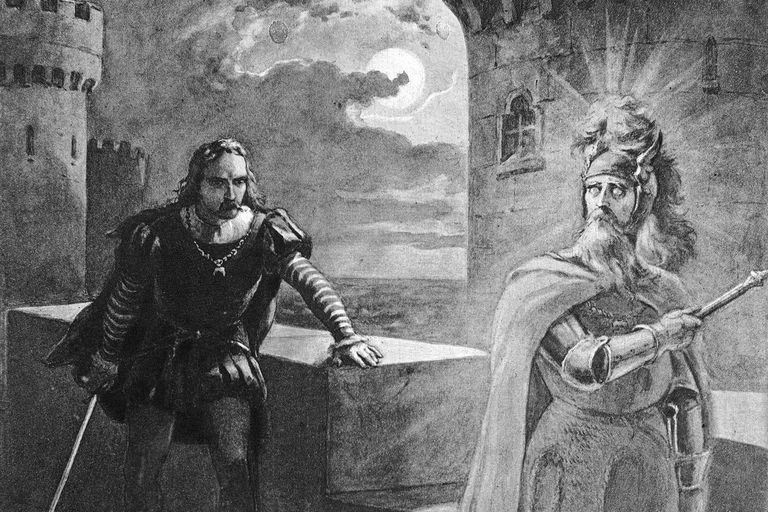
The full title of this play is “The Tragedy of Hamlet, Prince of Denmark.” It follows the story of Hamlet, who is overcome with grief after his father’s death. He slowly descends into madness after his father’s ghost reveals that his uncle killed him. Throughout the play, Hamlet tries to figure out the truth and exact revenge on those who wronged his father.
Despite only having 20 scenes in total, this is Shakespeare’s longest play. In fact, it has a word count of more than 30,000 words. It is where the famous, “To be or not to be,” monologue is from.
Many believe “Hamlet” to be Shakespeare’s most influential work. In the 21st century alone, companies continue to restage “Hamlet.” Popular actors like Michael Sheen, Benedict Cumberbatch, and Tom Hiddleston have reprised the role.
Julius Caesar
Despite the title, the story follows Brutus more than Julius Caesar himself. Brutus is originally Caesar’s friend, but he admits that he believes Caesar abuses his power. Throughout the play, Brutus and his group plot to murder Caesar. This all happens while Rome is under a civil war.
This five-act play has 20 scenes in total. “The Tragedy of Julius Caesar” is another title for the play.
An interesting fact is that another Shakespeare play mentions this tragedy. In “Hamlet,” the prince meets Polonius, who mentions that he acted as Julius Caesar in a play.
King Lear
For “King Lear,” Shakespeare draws inspiration from the myth of Leir. King Lear has three daughters. However, he only passes down his power and lands to two of them. He banishes his youngest daughter, Cordelia. However, his two older daughters send him away after he asks them for help. This leads him on the path of madness.
“King Lear” has five acts with 26 scenes in total.
The 1900s saw a lot of film adaptations of this Shakespeare play. It was clear that the audiences of that time favored this tragedy. Furthermore, Jane Smiley’s “A Thousand Acres” won the Pulitzer Prize for Fiction. Her story was also based on “King Lear.”
Macbeth
The story follows Macbeth, a beloved army general of Scotland. His wife convinces him to kill the King of Scotland so that he can take his crown. Throughout the play, the couple goes to great lengths to keep this treason a secret.
Despite having 28 scenes, “Macbeth” is one of Shakespeare’s shorter plays. It only has a word count of around 17,000 words. Despite its short length, many praise the play for its reflection on ambition and greed.
As one of the most famous Shakespeare plays, Macbeth has a lot of adaptations. One example is “Kumunosu-jo,” a Japanese version by Akira Kurosawa that is universally acclaimed. More recently, a 2015 film adaptation features “X-men” star Michael Fassbender.
Othello
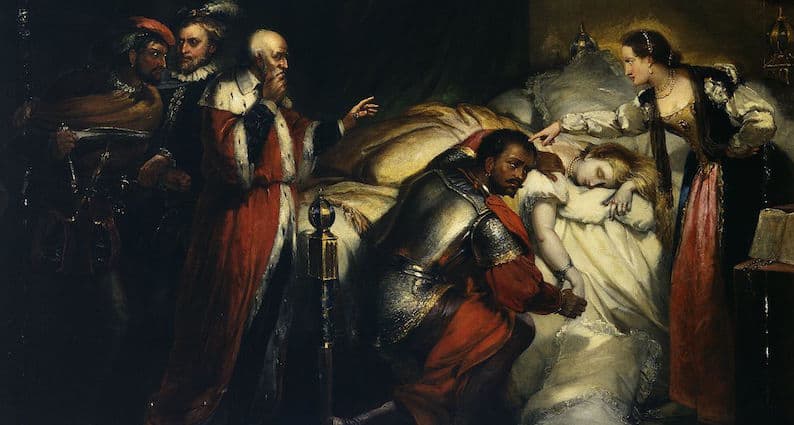
Another popular Shakespeare play is “Othello.” The main characters of the play are Othello and Iago. Jealous of his success, Iago schemes against his general, Othello. He tricks Othello into believing that his wife is unfaithful. Othello, who is also a jealous man, falls for it. This then causes a series of tragic events to unfold.
This tragedy has five acts and a total of 15 scenes. Furthermore, its full title is “The Tragedy of Othello, the Moor of Venice.”
A Bollywood adaptation of the play exists. The title of this 2006 Hindi movie is “Omkara.” In New Zealand and Australia, stage adaptations of the play are also popular.
Romeo and Juliet
This tragedy follows the love story of Romeo and Juliet, young lovers who are from feuding families. The two plan to wed in secret. However, circumstances get in the way. A failed communication leads to the demise of both lovers.
“Romeo and Juliet” is five acts long with 26 scenes. Many people believe that “Romeo and Juliet” is one of the best Shakespeare plays ever. With such a long list, it’s hard for people to agree. However, pop culture certainly loves “Romeo and Juliet.” Some even say it is the “most-filmed” play ever.
The musical, “West Side Story,” is based on the play. Disney’s “High School Musical” also draws from the idea of star-crossed lovers. An anime with the title “Romeo x Juliet” from 2007 was also popular.
Timon of Athens
The story follows the wealthy Timon. He is irresponsible with his money, and he often spends it on shallow friendships. When his wealth runs out, his so-called friends cast him aside. Because of this, he isolates himself in a cave, where he finds enough gold to fund his revenge on Athens.
This Shakespeare play has five acts and 17 scenes. Some also claim that Thomas Middleton is a co-writer of this play.
Compared to his other works, this play isn’t as adapted or staged. Still, BBC Television’s Shakespeare series did not forget this tragedy as they produced it in 1981.
Titus Andronicus
This Shakespeare play is about Titus, who is a general in the Roman army. He enslaves Queen Tamora, her sons, and her lover after he wins the fight against the Goths. Tamora and her family vow to take revenge on him, and so begin the clashing of these two families.
It is five acts long with a total of 14 scenes. Historians estimate Shakespeare wrote this between 1588 and 1593. Thus, they believe that this is his first tragedy.
The writers of the sitcom “South Park” base an episode on this play. It featured the theme of revenge as well.
Troilus and Cressida
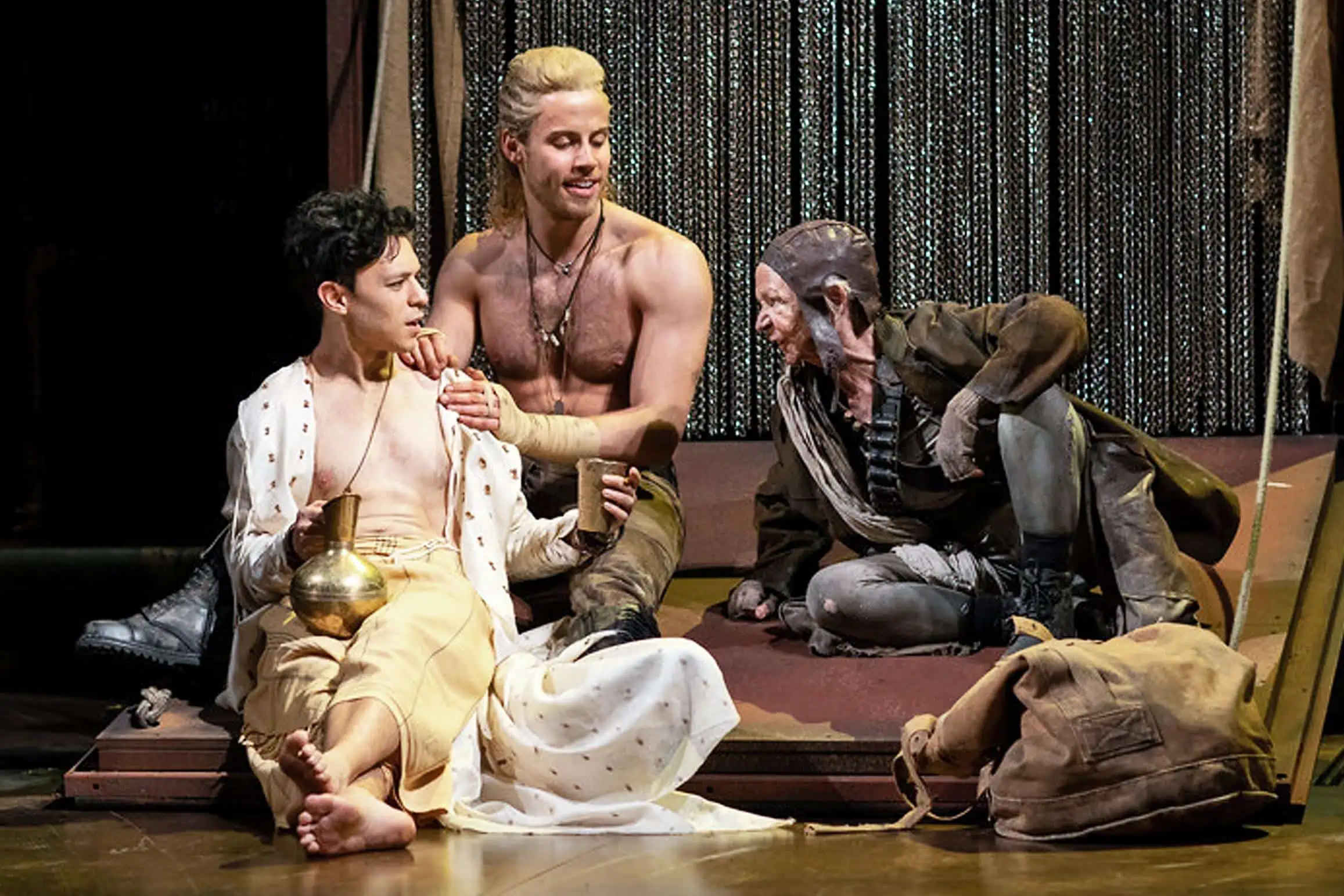
This Shakespeare play takes place during the Trojan War. The Trojan prince, Troilus, falls in love with Cressida. They begin a love affair that is halted when Cressida has to move to a Greek camp. There, she meets Diomedes, who woos and wins her over.
This tragedy has 25 scenes in its five-act structure. This play follows the story of Homer’s Iliad, with plot points converging.
Film adaptations for this play are scarce. This is most likely because the demand for other Shakespeare plays was high. In fact, this might be the case during Shakespeare’s time as well. There are not many recorded runs of this, even during the 1600s.
Historical
The last major group of Shakespeare plays is historical. Shakespeare’s history plays feature the lives of English kings. While they often end in tragedy, history plays are biographical. Thus, scholars believe them to be accurate retellings of historical events.
During his time, Shakespeare was able to write a total of 11 history plays. Among these plays is a subgroup called Henriad. Scholars commonly group “Richard II,” “Henry IV, Part I,” “Henry IV, Part II,” and “Henry V,” together.
Henry IV, Part I
“Henry VI, Part I” retells the political tension between King Henry IV and Hotspur. Despite being an English knight, Hotspur incites a rebellion against the crown. This goes on for almost a year until King Henry and his son defeat them.
This Shakespeare play has five acts with 19 scenes.
There are many adaptations of this historical play. However, most of them merge the stories of Part I and Part II. One of the most recent adaptations is the Netflix film, “The King.”
Henry IV, Part II
Following the events in Part I, Part II takes place when Henry IV falls ill. Unlike the first, this play focuses more on Henry’s sons, John and Hal, as well as Falstaff. Falstaff is Hal’s friend, but he also causes a lot of trouble for the prince.
The second part of this play also has five acts, with 20 scenes. Historians estimate that Shakespeare wrote this between 1596 and 1599.
There are a lot of TV series adaptations for Part II. A one-man hip-hop musical inspired by this Shakespeare play also exists.
Henry V
This history play now follows the story of Henry V, previously Prince Hal. He is now King of England after his father’s passing. The play follows his journey to claim France as his own. During this, his army suffers a great deal.
“Henry V” is a five-act play with 28 scenes in total. It is also the last installment in Shakespeare’s Henriad.
This Shakespeare play was popular on Broadway. In fact, a production from 1990 ran for 54 performances. Another adaptation is a dance-theatre version with the title, “Dancing Henry Five.”
Henry VI, Part I
This play follows the life of Henry VI as he deals with the growing political turmoil among his noblemen. At the beginning of the story, Henry IV is not the king yet. However, he carries the heavy burden of securing French land and bridging petty squabbles.
This Shakespeare play is five acts long with 27 scenes. Another title for this play is “1 Henry IV.” Some people believe Christopher Marlowe and Thomas Nashe helped write this play too.
Furthermore, a manga adaptation of all parts of “Henry VI” exists. The title is “Requiem of the Rose King.”
Henry VI, Part II

King Henry VI’s story continues in this Shakespeare play. He marries Margaret, who already has another lover. Together, Margaret and her lover scheme to manipulate Henry VI. All the while, political conflict from Part I continues. It comes to a head when the Duke of York leads a rebellion that overthrows Henry IV.
In addition, Part II has fewer scenes than the first. This five-act play only has 24 scenes. Like the first, another title for this is “2 Henry VI.”
BBC also produced a TV adaptation of this. However, it covered the entire story of the trilogy of Henry VI.
Henry VI, Part III
In this Shakespeare play, Henry VI and York fight over the throne. With their power, they continuously fight and exile one another. In the end, York’s son takes the throne as the new king.
The last play about King Henry VI is a five-act play with 28 scenes. “3 Henry VI” features one of Shakespeare’s longest soliloquies ever. A soliloquy is when a character voices his thoughts out loud.
Henry VIII
The story follows King Henry VIII, who takes advice from Cardinal Wolsey very seriously. Wolsey takes full advantage of this. He abuses the power that Henry gives him. While this happens, Henry falls in love with Anne Boleyn.
This Shakespeare play comprises five acts with 18 scenes. Some also call this “All Is True.”
One interesting fact about “Henry VIII” is that the Globe Theatre burned down during a run. In 1613, the run used a cannon. It, unfortunately, burned the roof and the rest of the building down.
King John
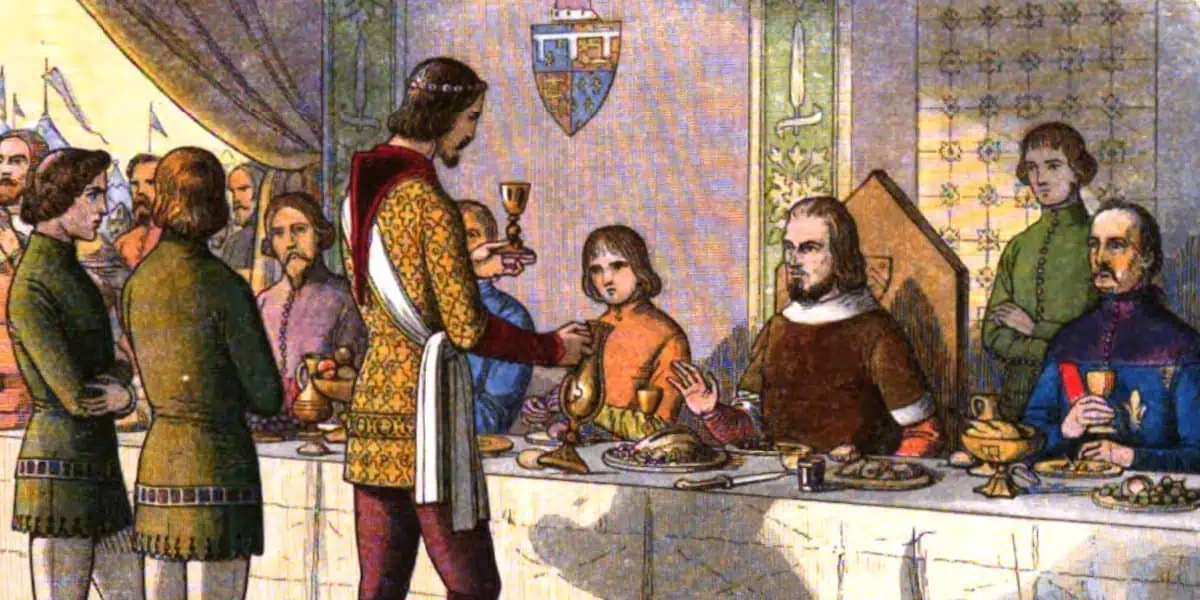
This history play retells the life of King John, who ruled England from 1199 to 1216. To prove himself to his people, King John declares war against the French. Unfortunately, his plan backfires. In the end, the Church and his noblemen turn against him.
For “King John,” Shakespeare wrote 16 scenes within five acts. The longer title of this is “The Life and Death of King John.”
Among his history plays, King John isn’t as popular with the media industry. Because of this, not many adaptations can be found.
Pericles, Prince of Tyre
In this play, Shakespeare retells the story of Prince Pericles. After he wins a competition to win the hand of a princess, he leaves to return to his home. However, storms make their journey back difficult.
This Shakespeare play has five acts with 26 scenes. It is also his shortest history play. “Pericles” has a word count of around 18,000 words. Unlike other Shakespeare plays, this one is from the Jacobean era.
A recent web series adapted “Pericles.” The production company live-streamed the play on YouTube, as COVID-19 keeps most theaters closed.
Richard II
This history play centers around King Richard II, who ruled England from 1377 to 1399. It dramatizes the last two years of his reign. His friends advise him poorly, and it leads to his downfall. In the end, he steps down from his crown and dies.
“Richard II” comprises five acts with a total of 19 scenes. Its longer title is “The Life and Death of King Richard the Second.”
A stand-alone film adaptation is yet to come. However, BBC did feature Richard II and other plays in their Henriad TV series.
Richard III
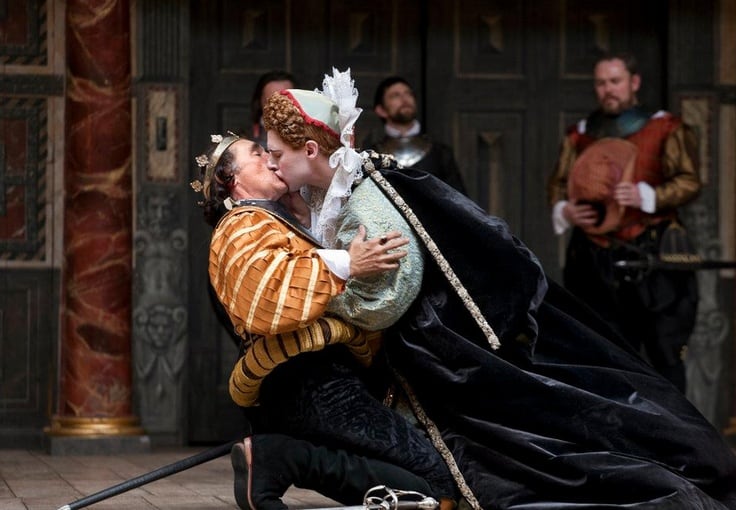
Last, this Shakespeare play is about King Richard III. His reign over England was a brief 2 years. The play, however, covers the years before as he tried to rise to power. He used dirty tactics, including murder, to claim the throne. In the end, his bloody claim to power also ends with his own bloody demise.
For “Richard III,” Shakespeare wrote 25 scenes within five acts. It is his second-longest play after “Hamlet.”
One fact about this play is that Abraham Lincoln was a big fan of Shakespeare. “Richard III” was his favorite.
Was this page helpful?
Our commitment to delivering trustworthy and engaging content is at the heart of what we do. Each fact on our site is contributed by real users like you, bringing a wealth of diverse insights and information. To ensure the highest standards of accuracy and reliability, our dedicated editors meticulously review each submission. This process guarantees that the facts we share are not only fascinating but also credible. Trust in our commitment to quality and authenticity as you explore and learn with us.
